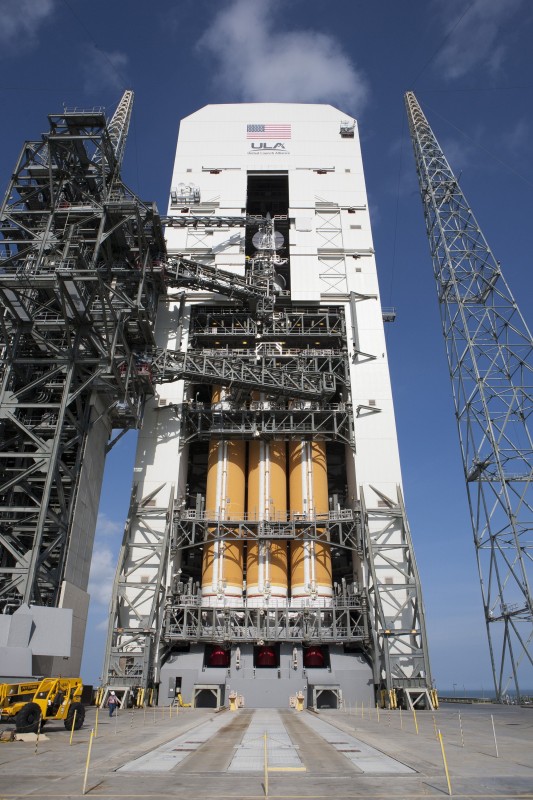By Amanda Barnett and Jason Hanna
(CNN) — NASA will have to wait at least one more day to see how its new Orion spacecraft flies.
The space agency scrubbed Thursday morning’s test launch in Florida after a series of delays, the last of which happened because some liquid-oxygen fuel and drain valves failed to open during the countdown, NASA said.
The launch tentatively has been rescheduled for 7:05 a.m. ET Friday.
The launch of Orion — a craft designed to eventually explore deep space — is to be one of NASA’s biggest moments since the shuttle era ended in 2011.
NASA spent most of Thursday morning’s nearly 2½-hour launch window trying to work out various obstacles and kinks before scrubbing the launch around 9:40 a.m. ET. The first delay involved a boat that came too close to the launch area; more delays came because of wind gusts.
When the countdown resumed, valves failed to open in the boosters, eventually leading to the scrubbing.
A new beginning
NASA hopes Orion will usher in a new era: Eventual human exploration of deep space.
“We haven’t had this feeling in awhile, since the end of the shuttle program,” Mike Sarafin, Orion flight director at Johnson Space Center, said in a preflight briefing on Wednesday.
Orion looks like a throwback to the Apollo era, but it is roomier and designed to go far beyond the moon: to an asteroid and eventually to Mars.
“It is, I think, consistent with those — the beginning of shuttle and beginning of Apollo,” said Mark Geyer, NASA Orion program manager. “I think it’s in the same category.”
When it becomes fully operational, Orion’s crew module will be able to carry four people on a 21-day mission into deep space or six astronauts for shorter missions. By comparison, the Apollo crew modules held three astronauts and were in space for six to 12 days. Orion’s crew module is 16.5 feet in diameter and Apollo was 12.8 feet in diameter, NASA said.
Orion is expected to take up its first crew in 2021.
During this test flight, Orion will climb to an altitude of 3,600 miles (15 times higher than the International Space Station) and will orbit Earth twice. Four and half hours later, it will splash down in the Pacific Ocean about 600 miles off the coast of Baja California. Two U.S. Navy ships, the amphibious transport dock ship USS Anchorage and the Military Sealift Command rescue and salvage ship USNS Salvor, will help NASA recover the capsule.
Once in orbit, Orion should send back some amazing pictures of Earth, NASA said. If the weather cooperates, NASA said a drone will provide a live video feed of the splashdown.
Though Orion’s first flight won’t have people on it, it won’t go up empty. It will carry the names of more than a million people packed on a dime-sized microchip.
“Sesame Street” is sending up some mementos to inspire students about spaceflight, including Cookie Monster’s cookie and Ernie’s rubber ducky.
Also going up: an oxygen hose from an Apollo 11 lunar spacesuit and a small sample of lunar soil. A Tyrannosaurus rex fossil from the Denver Science Museum will be on board and lockers will be filled with flags, coins, patches, poetry and music.
The-CNN-Wire
™ & © 2014 Cable News Network, Inc., a Time Warner Company. All rights reserved.
